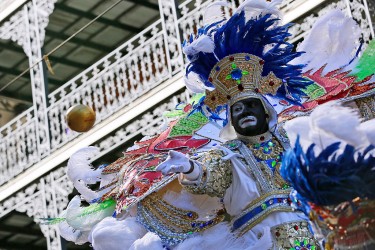The latter years of the nineteenth century were a period of rupture in New Orleans. Economically, the city was industrializing. Culturally, it was Americanizing. And linguistically, New Orleans was anglicizing. As these changes transformed the city, editors and readers of largely northeastern-based magazines such as Harpers embraced a newly nostalgic vision—a Romantic vision—of the lost or nearly-lost New Orleans. A crop of regionalist writers including Hearn, George Washington Cable, and Grace King helped shape this project of cultural and linguistic nostalgia.
Like the locales that the Romantics elevated into symbols of the preindustrial, New Orleans was distinct for a number of reasons, most prominently in its continued use of French and the existence of a large and relatively prosperous class of mixed-race people. This reality in turn made it an ideal symbolic shorthand for an “authentic,” exotic past. In this light, the city was seen as not merely Creole and Francophone but also thoroughly exceptional. According to T. R. Johnson, professor of English at Tulane University, the seeds of this Romantic exceptionalism were planted long before the Civil War and the industrialization of New Orleans. Beginning in the late eighteenth century, New Orleans was a roaring seasonal business destination for young men from the Ohio River valley, who came south to trade in goods like whiskey and corn. These young men carried home stories of a city unlike any they knew. Beginning even then, two primary sources of fascination surrounded New Orleans: one racial and one linguistic.
“People expect[ed] to see two things when they [came] down to New Orleans: people speaking French, and people who [were] neither black nor white,” Johnson said. Following the Civil War, recently returned Union troops further disseminated this discourse of New Orleans as an exceptional and exotic city, bringing it by word of mouth to audiences throughout the nation. Matthew Paul Smith points out that this regionalist literature, written by New Orleanian locals and published in national outlets, helped serve a national hunger for reunification and identity consolidation, bringing every region of the expanding United States to readers in East Coast cities.












